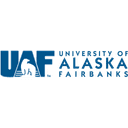This course is part of Unmanned Aerial Systems.
This comprehensive course explores the fundamentals of Unmanned Aerial Systems (UAS) technology and applications. Students learn about various platform types, from fixed-wing aircraft to copters, and their integration with sophisticated sensor payloads. The curriculum covers essential topics including flight principles, system components, and sensor integration. Through interactive activities and hands-on UAS design exercises, participants gain practical experience in selecting and configuring UAS for specific applications. The course addresses both technical aspects and real-world applications in research, industry, surveying, emergency response, and commercial sectors. Students learn about platform selection, sensor integration, and mission planning, preparing them for careers beyond basic drone operation.
Instructors:
English
English
What you'll learn
Understand core principles of flight safety and UAS operations
Master various platform types used in unmanned flight
Learn sensor integration for data collection during flights
Gain expertise in UAS applications across different industries
Develop skills in selecting appropriate equipment for specific needs
Calculate aircraft weight trends and aerodynamic properties
Skills you'll gain
This course includes:
PreRecorded video
Graded assignments, quizzes
Access on Mobile, Tablet, Desktop
Limited Access access
Shareable certificate
Closed caption
Get a Completion Certificate
Share your certificate with prospective employers and your professional network on LinkedIn.
Created by
Provided by

Top companies offer this course to their employees
Top companies provide this course to enhance their employees' skills, ensuring they excel in handling complex projects and drive organizational success.





There are 3 modules in this course
The course provides a comprehensive introduction to Unmanned Aerial Systems (UAS), covering three main modules. Students learn about UAS history, flight principles, and terminology in the first module. The second module focuses on platform components, including structure, electronics, propulsion, and navigation. The final module explores sensor integration and applications, including optical cameras, LiDAR, and thermal sensors. The course includes interactive activities and real-world scenarios for practical application.
Introduction to UAS
Module 1
Platforms
Module 2
Payloads & Sensors
Module 3
Fee Structure
Individual course purchase is not available - to enroll in this course with a certificate, you need to purchase the complete Professional Certificate Course. For enrollment and detailed fee structure, visit the following: Unmanned Aerial Systems
Instructors

2 Courses
A Pioneer in Unmanned Aviation Systems and Flight Operations
Andrew Wentworth serves as a UAS Subject Matter Expert at the Alaska Center for Unmanned Aircraft Systems Integration (ACUASI), where he manages critical programs including the SeaHunter initiative for protecting endangered North Atlantic right whales. After accumulating over two decades of experience across military, private industry, and academic sectors, he joined ACUASI in 2016, bringing expertise from his roles as a UAS Developmental Flight Test Pilot at DRS Technologies and UAS Team Leader for the United States Army. As the first graduate to earn an MS in Unmanned Systems from Embry-Riddle Aeronautical University's Worldwide Campus, he has established himself as a leading authority in unmanned aviation. His current work at ACUASI involves managing complex UAS operations, where he has notably improved the efficiency of whale detection systems, reducing reporting times from 48 hours to 6-8 hours through the integration of onboard computing and AI technologies. His credentials include an FAA single-engine airplane license with instrument rating and an sUAS remote pilot certificate, complementing his extensive experience in UAS curriculum development and technical writing. Through his leadership of the SeaHunter program, he continues to advance the field of unmanned aviation while contributing to critical environmental conservation efforts.

2 Courses
A Pioneer in Remote Sensing and Coastal Hazard Assessment
Matthew Balazs serves as Research Assistant Professor at the University of Alaska Fairbanks and Deputy Director of the Alaska Coastal Cooperative, where he combines expertise in geospatial sciences with innovative approaches to climate change adaptation. After completing his PhD in Geology with emphasis in remote sensing in 2021, he has established himself as a leader in applying advanced remote sensing technologies to natural hazard assessment. His research spans novel applications of UAS data collection, GIS technology, and 3D remote sensing for coastal hazard monitoring. As a key figure in the $13.9 million NSF-funded AC³TION project, he works to help coastal communities respond to climate change challenges, emphasizing the importance of strong relationships between researchers and local communities. His expertise in visualization and virtual reality has enhanced education and outreach activities, making complex scientific data more accessible to stakeholders. Through his work at the Geophysical Institute, he continues to advance the understanding of mass wasting hazards in Alaskan fjords while developing innovative approaches to coastal resilience and climate adaptation.
Testimonials
Testimonials and success stories are a testament to the quality of this program and its impact on your career and learning journey. Be the first to help others make an informed decision by sharing your review of the course.
Frequently asked questions
Below are some of the most commonly asked questions about this course. We aim to provide clear and concise answers to help you better understand the course content, structure, and any other relevant information. If you have any additional questions or if your question is not listed here, please don't hesitate to reach out to our support team for further assistance.



